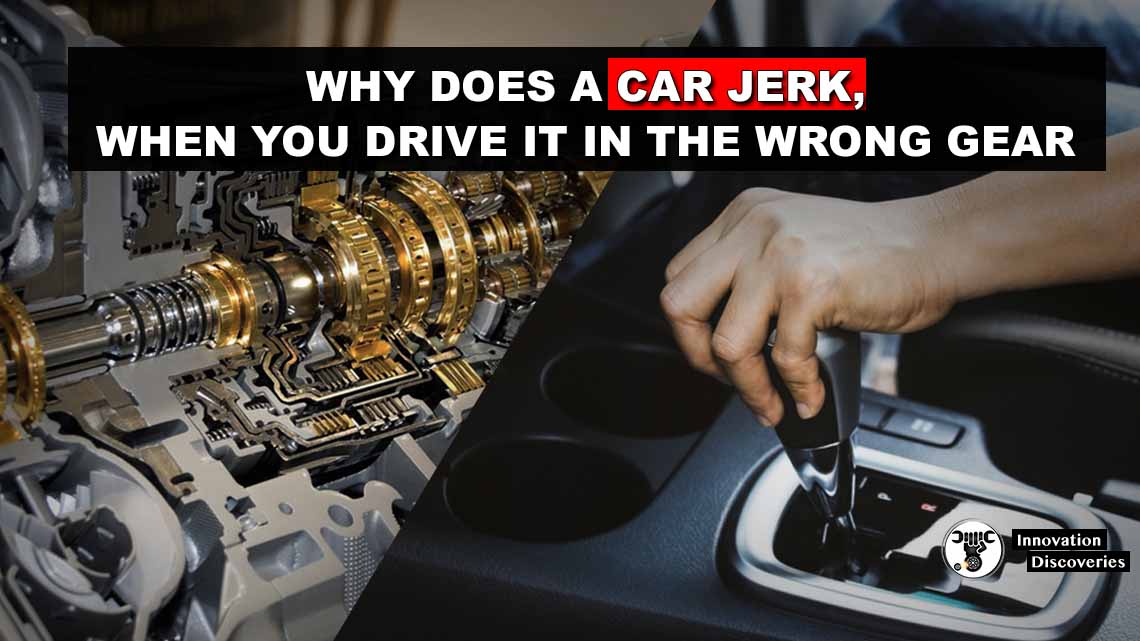
Introduction:
When driving a car, it is important to use the correct gear for the appropriate speed and driving conditions. Using the wrong gear can cause the vehicle to jerk or lurch, which can be unsettling and potentially damaging to the vehicle’s components.
To understand why this happens, it’s essential to have a basic understanding of gearboxes, transmissions, and how they function.
Gearbox vs transmission
In the context of automobiles, the terms “gearbox” and “transmission” are often used interchangeably. However, strictly speaking, the gearbox refers to the specific component responsible for changing gears, while the transmission encompasses the entire system that transmits power from the engine to the wheels.
The transmission includes the gearbox, clutch, torque converter (in automatic transmissions), and various other components.
Manual Or Automatic Gearbox: Which Is The Best?
How do transmissions work?
In a manual transmission, the gearbox consists of a set of gears with different ratios. These gears can be engaged or disengaged by the driver using the clutch pedal and the gear selector. When the driver shifts gears, the clutch is engaged, allowing the engine’s power to be transmitted to the gearbox. The selected gear ratio determines the speed and torque applied to the wheels.
In an automatic transmission, the gear ratios are selected automatically based on the vehicle’s speed, load, and other factors. Automatic transmissions use a torque converter, which is a fluid coupling that allows the engine to keep running while the vehicle is stopped or moving slowly.
Read More:

What is torque modulation?
Torque modulation refers to the control of torque output during gear changes to ensure a smooth transition. When shifting gears, especially during upshifts, there is typically a difference in rotational speed between the engine and the wheels.
This difference is known as the “shift shock” or “shift jerk.” To mitigate this, modern transmissions employ torque modulation techniques.
Torque modulation involves temporarily reducing the torque applied to the wheels during gear changes. This can be done by momentarily reducing the fuel supply to the engine, applying the brakes, or altering the engagement of the clutch in manual transmissions.
By reducing the torque, the transition between gears becomes smoother, minimizing the jerkiness or lurching sensation.
Also, read:
What are the different types of transmissions?
1. Manual Transmission:
- In a manual transmission, the driver manually selects and engages the gears using the clutch and gear selector.
- Manual transmissions offer more control and can be more engaging for driving enthusiasts.
- Shifting gears inappropriately, such as selecting too low or too high a gear for the speed, can cause the car to jerk.
2. Automatic Transmission:
- Automatic transmissions select and engage the gears automatically based on various inputs such as vehicle speed, throttle position, and load.
- The torque converter in automatic transmissions helps smooth out gear changes, reducing jerking.
- In an automatic transmission, jerking can occur if the transmission is not functioning correctly or if there are issues with the torque converter or other components.
3. Dual-Clutch Transmission (DCT):
- Dual-clutch transmissions combine the efficiency of manual transmissions with the convenience of automatic transmissions.
- DCTs use two separate clutches to preselect and engage gears, allowing for quick and seamless gear changes.
- If a DCT is not properly calibrated or if there are mechanical issues, jerking can occur during gear changes.
4. Continuously Variable Transmission (CVT):
- CVTs use a system of belts and pulleys to provide an infinite number of gear ratios, offering smooth acceleration and improved fuel efficiency.
- However, certain CVTs can exhibit a rubber-band effect, where the engine RPM does not directly correspond to the vehicle’s speed, potentially causing a jerking sensation.
Also, read:
The future of transmission
Automotive technology is continuously evolving, and transmission systems are no exception. Some notable advancements and trends in transmission technology include:
1. Electrification:
The rise of electric vehicles (EVs) eliminates the need for traditional transmissions altogether since electric motors can deliver instantaneous torque.
EVs typically use a single-speed transmission or direct drive, which provides seamless acceleration.
2. Hybrid Powertrains:
Hybrid vehicles combine an internal combustion engine with an electric motor and battery.
Transmissions in hybrid vehicles are designed to optimize power delivery from both the engine and electric motor, often using specialized gearsets or continuously variable transmissions.
3. Automated Manual Transmissions (AMTs):
AMTs provide the convenience of automatic transmissions while retaining the efficiency of manual transmissions.
These transmissions use electronic actuators to engage and disengage the clutch and shift gears, eliminating the need for a clutch pedal.
AMTs can reduce jerking associated with manual transmissions since the shifting process is automated.
Read More:
Conclusion:
When a car jerks or lurches while driving in the wrong gear, it is usually due to a mismatch between the engine speed and the speed the wheels need to maintain. This mismatch can occur when the driver selects too high or too low a gear for the current speed, causing the engine to struggle or rev excessively.
Understanding the principles of gearboxes, transmissions, and torque modulation helps explain why improper gear selection leads to jerking.
Different types of transmissions, such as manual, automatic, dual-clutch, and continuously variable, have their own characteristics and potential causes of jerking.
As automotive technology continues to advance, with the rise of electrification, hybrid powertrains, and automated manual transmissions, the future of transmissions holds promise for even smoother and more efficient gear changes, minimizing the likelihood of jerking during driving.
Visit Forum
Visit Our Friendly Website

